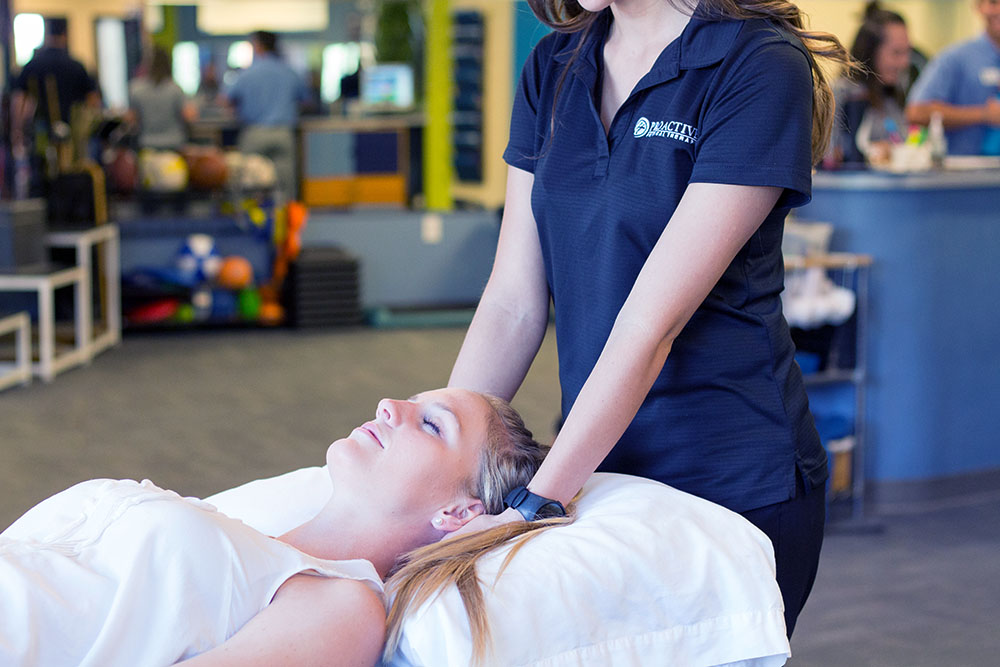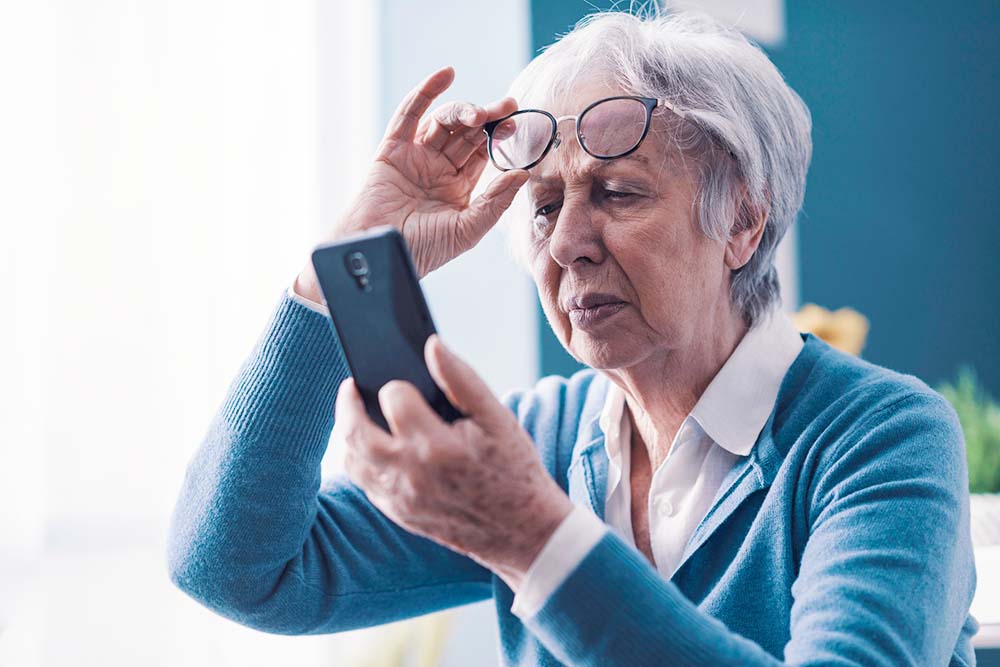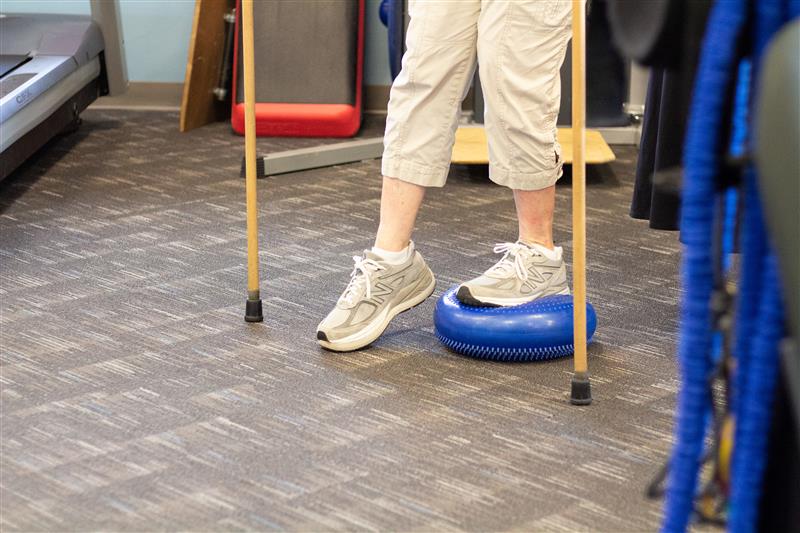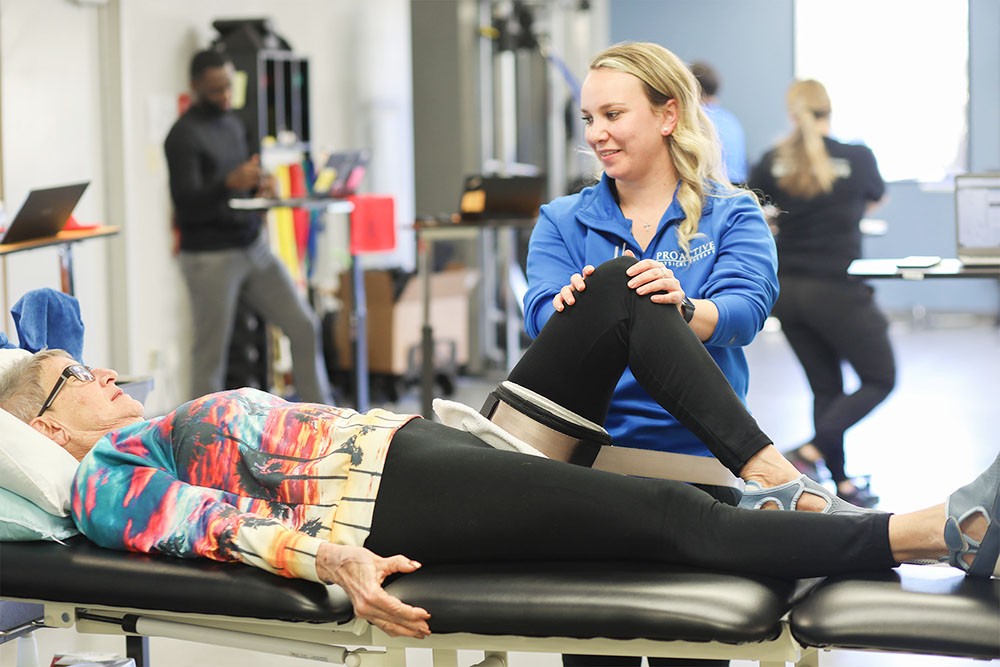A brain injury is any insult to the brain causing altered brain function or pathology by an internal or external force. Brain injuries can result in changes in the brain’s cellular activity, causing impaired motor and/or mental functioning. How can physical therapy play a role in brain Injuries?
Classifications of Brain Injuries
There are two main classifications of brain injury, traumatic and non-traumatic.
Traumatic:
A traumatic brain injury, which you may have heard called a TBI is caused by an external force to the head. Mild traumatic brain injury is also called a concussion or mTBI. Some examples include hitting your head during a fall, whiplash from a motor vehicle accident, shaken baby syndrome, assault, or sports-related injuries such as being hit against the head with a bat or ball.
Non-Traumatic:
A non-traumatic brain injury is caused by an internal force, such as a stroke (cerebral vascular accident) due to a blood vessel rupture causing bleeding (hemorrhage) or a blood clot obstructing the blood flow (ischemic).
Mild stroke can be referred to as a mini-stroke or a TIA (transient ischemic attack) which is a temporary disruption of blood flow in the brain that subsides due to the clot dislodging or dissolving, causing no permanent damage. It is important to acknowledge the symptoms of a TIA, as it is often a precursor for a more severe stroke to come.
Other causes of non-traumatic brain injuries are lack or loss of oxygen (hypoxia/anoxia) often due to near-drowning, choking, or drug overdose, tumors, seizures, and infectious diseases such as meningitis.
What does a Brain Injury look like?
There is a wide range of symptoms with brain injuries that can vary significantly depending on the severity. It is important to recognize the symptoms of each.
Traumatic:
Loss of consciousness (for any amount of time) the longer the greater risk for more significant impairments, nausea/vomiting, impaired concentration, blurred vision, difficulty speaking, and impaired balance.
Stroke:
Drooping or numbness on one side of the face, arm weakness or numbness, loss or slurred speech.
FAST is an acronym to help remember the warning signs of a stroke or TIA. The FAST test can help you recognize the most common signs. Facial weakness: Can the person smile? Has their mouth or eye drooped? Arm weakness: Can the person raise both arms? Speech problems: Can the person speak clearly and understand what you say? Time to call 911 if you see any of these signs.
Symptoms of a brain injury?
The symptoms can range from mild to severe, depending on the severity
Traumatic:
· Mental functioning, internal brain functions, emotional control, and motor control.
Stroke:
· Problems with mental and physical functioning
· Decreased muscle tone (flaccidity or hypotonicity)
· Vision, facial expression, visual-spatial functions, body space awareness, and with pain.
What Can Physical Therapy Do For Me?
We start out with an evaluation where the therapist and patient will conversate about the injury and the patient’s limitations. The therapist and patient will then decide upon appropriate goals together to work on during therapy sessions. Your therapist will provide ongoing evaluation of limitations and progression of goals. They will also provide individualized home exercise programs to ensure carry-over of progress at home.
Specific Treatment Approaches
Home preparation/modification – with severe brain injuries the patient may go home from the hospital in a wheelchair or with a walker initially and the home will likely need to be modified and/or adapted to make it more safe and accessible for both the survivor and the family members. We can assist you in a home evaluation including measuring and identifying modifications to enhance the survivor’s independence with daily activities.
Return to the work environment – ergonomic assessments at your place of employment to ensure proper ergonomics are in place, often required due to new onset of physical limitations to reduce repetitive use injuries, improve the ability to perform job duties, and prevent/reduce pain.
Mental functioning for return to school/work/play/sport – assistance with regaining cognitive functions as well as creating compensatory techniques for return to school, work, or home in areas like money management, time management, schedules, course work, learning new information, and transportation. And monitor cognitive functions while increasing physical demand for a return to play/sport.
Physical function – rehabilitation for the return of motor control, coordination, and balance by designing specific treatment/exercise programs to target areas of deficits as well as the use of therapeutic handling for the return of muscle control
Visual function – the return of motor control of your affected eye through exercises that target the muscles and pathways impaired for reading, maintaining eye contact during conversation, using a computer/smartphone, and maintaining visual control for walking or driving
Hand function – for regaining fine motor control and dexterity for managing clothing (buttons/zippers), managing containers for cooking, writing, and more.
Splint:
With muscle tone impairments in the hand, you may require a splint (custom-made orthosis). A splint maintains the hand in a safe/functional position to prevent injury or contractures.
What is neuroplasticity?
Neuroplasticity is the ability of the brain to rewire or reorganize itself after injury. There are various studies over the past decade that have shown that the adult brain can “rewire” itself when damaged. Similar to a traffic jam, you can utilize alternate roads that are connected to the one you are stuck on to bypass the jam. Ultimately reaching the same destination. Through neuroplasticity, you are creating new pathways for cognitive and motor control.
Why should I choose a specialist from ProActive?
Brain injuries can be extremely complicated to recover from, requiring knowledge of the brain’s functions and the impacts of an injury as well as experience treating brain injuries to provide adequate rehabilitation. We will help to quickly identify areas of deficit and create appropriate treatments to improve those areas. Severe brain injury survivors often require ongoing treatment throughout their life to manage their symptoms. For a free assessment contact any of our 9 Tucson locations.






